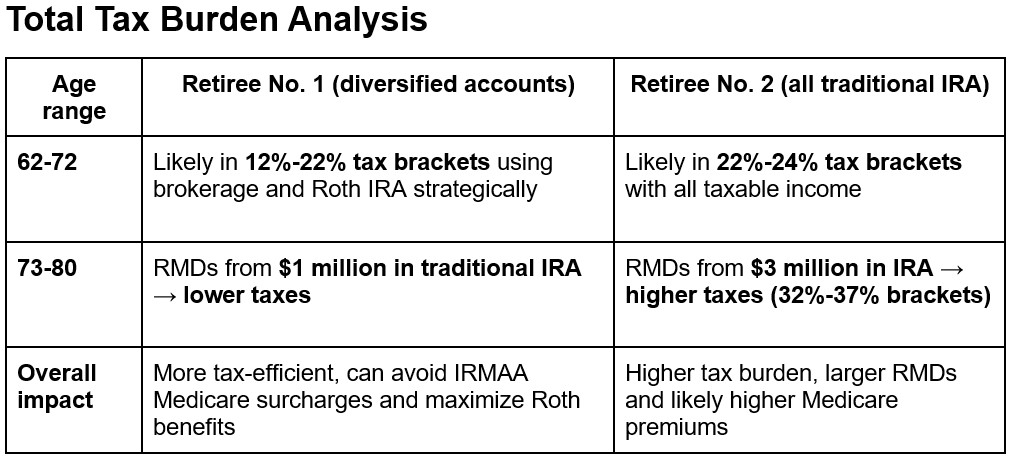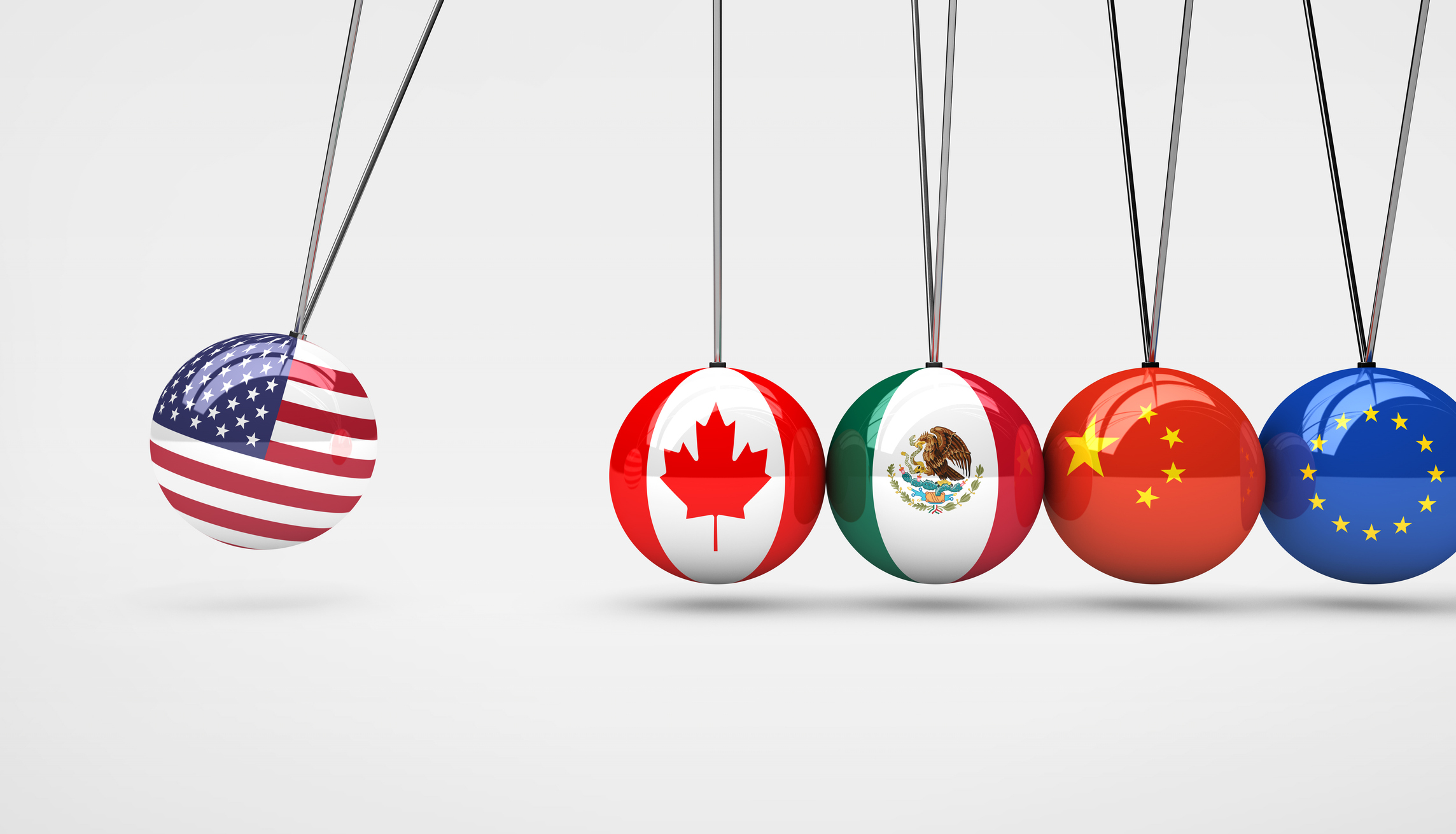Taxes in Retirement: What ESOP Participants Need to Know
Most Employee Stock Ownership Plans (ESOP) participants transfer their company stock to a traditional IRA starting around age 55, so taxes on that money have been deferred.


When you retire, one of the biggest changes Employee Stock Ownership (ESOP) participants will face is how taxes are handled.
During your working years, taxes are automatically withheld from your paycheck. In retirement, the responsibility to pay taxes shifts to you.
Without proper planning, this change can lead to financial surprises. Let's explore how taxes work in retirement, the differences between account types, and how working with a financial adviser or CPA can help you create a tax-efficient withdrawal strategy.

Sign up for Kiplinger’s Free E-Newsletters
Profit and prosper with the best of expert advice on investing, taxes, retirement, personal finance and more - straight to your e-mail.
Profit and prosper with the best of expert advice - straight to your e-mail.
The shift: Paying taxes on your own in retirement
Once you retire, income sources like Social Security, pensions and withdrawals from retirement accounts replace your paycheck. Taxes are no longer automatically withheld (except for pensions and Social Security if you request it).
This means you’ll need to estimate your tax liability and pay quarterly estimated taxes to the IRS. Failing to do so can lead to penalties and interest charges.
Understanding how your retirement accounts are taxed is key to avoiding surprises and keeping more of your hard-earned savings.
Taxable, tax-deferred and tax-free accounts
Retirement savings are typically held in three types of accounts, each with different tax implications:
Tax-deferred accounts. Examples are traditional IRAs, 401(k)s and Employee Stock Ownership Plans (ESOPs).
- Contributions are made pre-tax, and earnings grow tax-deferred
- Most ESOP participants will transfer company stock to an IRA beginning at age 55 through a process known as diversification.
- Withdrawals are taxed as ordinary income, and required minimum distributions (RMDs) begin at age 73 or 75, depending on your age
Taxable accounts. An example is a brokerage account.
- Contributions are made with after-tax dollars, and there are no tax benefits upfront
- Earnings are subject to capital gains taxes (short-term or long-term, depending on how long assets are held)
Tax-free accounts. Examples are Roth IRAs and Roth 401(k)s.
- Contributions are made with after-tax dollars, but withdrawals of earnings are tax-free if certain conditions are met
- Roth accounts have no RMDs, making them excellent tools for tax-efficient planning
How a financial adviser or CPA can help
Navigating retirement taxes requires a strategic approach. A financial adviser or CPA can:
- Estimate taxes. Help you calculate quarterly estimated payments and avoid penalties.
- Handle ESOP diversification. Help you transfer company stock to your IRA where you will have a wide range of options including stocks, bonds, mutual funds or ETFs.
- Prioritize withdrawals. Advise on which accounts to draw from first to minimize your tax liability over the course of your retirement.
- Optimize Roth conversions. Suggest strategies to convert tax-deferred accounts to Roth accounts during low-income years. Typically between retirement date and age 73 when RMDs begin.
- Plan RMDs. Help you prepare for RMDs and minimize the tax impact.
Who pays more taxes in retirement? Two scenarios
Imagine two retirees, each with $3 million saved but in different types of accounts.
Retiree No. 1: The tax-savvy saver
- $1 million in Roth IRAs (grows tax-free, withdrawals are tax-free)
- $1 million in a taxable brokerage account (low capital gains taxes)
- $1 million in traditional IRAs/401(k)s (taxed as regular income when withdrawn)
Withdrawal strategy:
- Begin with taxable account withdrawals to take advantage of lower long-term capital gains rates.
- Take modest withdrawals from tax-deferred accounts throughout retirement to reduce the size of future required minimum distributions (RMDs) and smooth out taxable income.
- Supplement income from Roth accounts as needed to fill income gaps without pushing into higher tax brackets.
Tax outcome: By staging withdrawals across all accounts, the retiree minimizes taxable income while proactively reducing RMDs. This approach also allows the Roth funds to continue growing tax-free for later years or tax-free for the next generation.
Retiree No. 2: The traditional saver
- All $3 million is in a traditional IRAs/401(k)s (taxed as regular income when withdrawn)
Withdrawal strategy:
- Start withdrawals earlier than required to spread out tax liability and avoid large RMDs.
- Consider partial Roth conversions during early retirement years when income is lower.
Tax outcome: Without taxable or Roth accounts to offset tax-deferred withdrawals, the retiree will likely face higher taxes, especially after RMDs begin. Proactive planning can help reduce the long-term tax burden.

Retiree No. 1 has significantly lower taxes across her lifetime due to diversified account types – especially tax-free Roth withdrawals. Retiree No. 2 pays more in taxes due to large RMDs beginning at age 73 and Medicare IRMAA surcharges in later years.
Key takeaways
- Retirement changes how taxes are paid, requiring careful planning.
- ESOP participants can continue tax deferral by transferring company stock to an IRA or 401(k) account.
- The type of account you hold — taxable, tax-deferred or tax-free — affects your tax liability.
- A financial adviser or CPA can create a personalized strategy to estimate taxes and optimize withdrawals.
By working with a trusted adviser, you can reduce your tax burden, preserve your wealth, and enjoy a financially secure retirement.
Have questions about retirement tax planning? Contact Peak Wealth Planning to create a strategy that works for you.
Find out more about ESOPs by reading Peter’s six-part series about them on Kiplinger.com, starting with part one: Five Key Advantages to Working at an Employee-Owned Company.
Related Content
Get Kiplinger Today newsletter — free
Profit and prosper with the best of Kiplinger's advice on investing, taxes, retirement, personal finance and much more. Delivered daily. Enter your email in the box and click Sign Me Up.

Peter Newman founded Peak Wealth Planning, LLC in 2014 to provide financial planning and investment management for individuals who built their wealth through ESOP participation, business ownership or real estate investing. He helps families diversify their concentrated stock, reduce estate taxes, preserve wealth and generate stable retirement income. Peter holds the Chartered Financial Analyst designation, considered by many to be the gold standard for investment management.
-
 How Many IRS Commissioners Have We Gone Through This Year?
How Many IRS Commissioners Have We Gone Through This Year?IRS Who were the former commissioners, and why did they resign? Find out how IRS turnover can impact your taxes.
By Kate Schubel
-
 Trump Dials Back Most Tariffs but Targets China
Trump Dials Back Most Tariffs but Targets ChinaThe Kiplinger Letter Wall Street hopes that higher tariffs on most countries are on hold for good. But the trade war between the U.S. and China is heating up.
By Jim Patterson
-
 How to Store Your Financial Documents the Right Way
How to Store Your Financial Documents the Right WayHaving mountains of financial paperwork take over your home can be frustrating. Here's how to get the mess under control while still having your essential information at your fingertips.
By Laura Gariepy
-
 First 100 Days: Trump's Impact on Your Finances
First 100 Days: Trump's Impact on Your FinancesHere are some opportunities to consider regarding investing, interest rates and tax cuts as the financial landscape shifts under the new administration.
By Daniel Razvi, Esquire
-
 What Would Happen if You Put Your Tax Refund in an IRA?
What Would Happen if You Put Your Tax Refund in an IRA?Not only could you get a tax break, but the compounding effect over 35 years could turn the average refund into nearly $14,000.
By Romi Savova
-
 Children Can't Afford to Fly the Nest? Here's How to Help
Children Can't Afford to Fly the Nest? Here's How to HelpThe high cost of living means more adult children are staying at home. Here are four ways to help financially so they can eventually spread their wings.
By Kelli Kiemle, AIF®
-
 How Much Will Car Prices Go Up With Tariffs?
How Much Will Car Prices Go Up With Tariffs?Tariffs could drive car prices up even higher, for new and used cars, as well as for American brands.
By Jim Patterson
-
 What Is the Buffett Indicator?
What Is the Buffett Indicator?"It is better to be roughly right than precisely wrong," writes Carveth Read in "Logic: Deductive and Inductive." That's the premise of the Buffett Indicator.
By Charles Lewis Sizemore, CFA
-
 Six Reasons to Disinherit Someone and How to Do It
Six Reasons to Disinherit Someone and How to Do ItWhether you're navigating a second marriage, handling an estranged relative or leaving assets to charity, there are reasons to disinherit someone. Here's how.
By Donna LeValley
-
 Stock Market Today: Dow Drops 699 Points After Powell Speech
Stock Market Today: Dow Drops 699 Points After Powell SpeechFed Chair Powell warned of a slowing economy and higher inflation but said the central bank isn't ready to cut rates just yet.
By Karee Venema